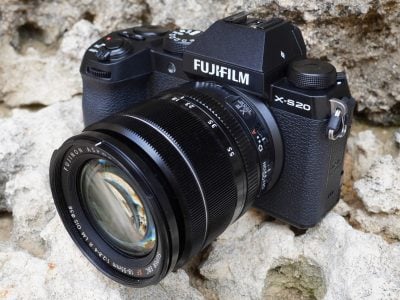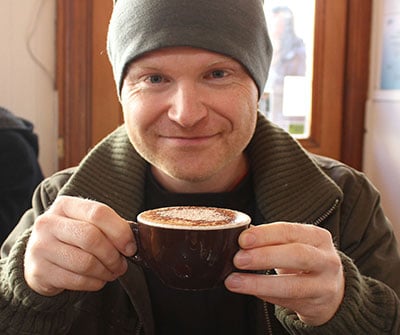Sony FE 50-150mm f2 GM review
-
-
Written by Gordon Laing
Intro
The Sony FE 50-150mm f2 G Master is a bright telephoto zoom that’ll delight portrait and event photographers, not to mention being ideal for close range sports.
Launched in April 2025, it’s Sony’s second zoom with a bright and constant f2 aperture, following the 28-70 f2. Both give you an extra stop over f2.8 zooms, delivering shallower depth-of-field effects and the chance to use lower ISOs or faster shutters under the same conditions.
But while the 28-70 f2 felt like Sony updating Canon’s earlier version, the 50-150 f2 is something new altogether. Find out everything in the video below, or if you prefer to read the written highlights, keep scrolling!
Tamron’s 35-150 f2-2.8 is the closest for Sony e-mount and costs roughly half the amount at around $1700, but only operates at f2 up to 40mm and dims to 2.8 from 80mm onwards. And as a third-party lens, the Tamron is also restricted to 15fps bursts with continuous autofocus. Whereas the Sony lens sports f2 all the way from 50 to 150, while also supporting 120fps stills with autofocus on the A9 III, and 240fps video with AF too.
In terms of design, the 50-150 f2 looks like a chunkier version of their 70-200 2.8, with similar build quality and weather sealing, including a rubber grommet at the mount. Note the silver name badge on the barrel though, more akin to a super-telephoto prime.
The 50-150 f2 measures 102mm in diameter, 200mm long and weighs 1.34kg with the supplied tripod foot removed. To put that in perspective, it’s the same length as the latest 70-200 2.8 GM II, but 14mm wider and almost 300g heavier. But remember that’s compared to the impressively light Mark II version of that zoom, as the original Mark I 70-200 2.8 GM actually weighed 1.48kg, making the new 50-150 f2 over 100g lighter.
To support the weight, the 50-150 includes a built-in tripod collar with a removable foot that slides on and is tightened in place. The foot has the usual two threads and a hole for a guide-pin, but like all of Sony’s tripod feet, doesn’t feature an Arca dovetail, and it’s also a little too small to be used as a carrying handle for long. Sigma remains one of the few companies to carve an Arca Dovetail in their tripod feet, allowing them to slide right into compatible clamps. Sony take note please!
The lens barrel can rotate freely within the collar, but there’s no clicked feedback at 90 degree intervals, it just turns smoothly, leaving you to line-up the dots around the barrel.
Next comes the aperture ring running between f2 and f22 with an A position for body based control if you prefer. As with all recent Sony lenses, the Aperture ring can be clicked with third stop intervals, or declicked with a switch on the side for smooth adjustments. It’s also possible to lock the ring in the A position.
Next is the zoom ring, smoothly turning between 50 and 150mm, with additional markings at 70 and 100mm. The throw’s about 70 degrees, allowing you to access the full range with the ring held between your thumb and finger. You can’t adjust the friction level of the zoom ring, but more importantly the zooming takes place internally, so the barrel doesn’t extend.
Moving along you’ll find three custom buttons at 90 degree intervals, along with switches for auto and manual focus, and full time Direct Manual Focus. And finally at the end of the barrel is a generously wide manual focusing ring, free-spinning and very smooth in operation. The lens supports linear response manual focusing and it’s easy to make very precise adjustments.
Meanwhile the filter thread measures 95mm, and the supplied cylindrical hood twists onto a bayonet at the end, with a button to release it and a small window that opens to access rotating filters. A rubber tip around the edge allows you to stand the lens up securely. Interestingly Sony warns filters with a large outer diameter may prevent the hood from fitting properly, and advises using models that are less then 99.4mm wide in total.
In terms of the optical construction, the 50-150 employs 19 elements in 17 groups, has an 11-bladed diaphragm system, and a closest focusing distance of 40cm at the 50mm focal length and 74cm at the 150 length. The maximum magnification is 0.2x, allowing slightly tighter close-ups than the 70-200 2.8 GM II. There’s no optical stabilisation, so you’ll be relying on IBIS to iron-out any wobbles.
The lens covers a surprisingly useful range and could replace a number of primes. It starts at 50mm for a standard field of view, before offering the popular portrait focal lengths of 70, 85, 100 and 135mm, and finally reaching 150mm to enlarge distant details. For some, the 50-150 range will actually prove more flexible than the traditional 70-200, but be warned the new lens is not compatible with teleconverters.
Now let’s have a look at focusing for stills photography, starting with the lens at 50mm f2, mounted on an A7R V, where you can see it swiftly pulling focus in single AF-S mode, with only a minor wobble at time to confirm. Switch to continuous AFC mode and the camera uses phase-detect AF to deliver faster and more confident focus pulls that are almost instant here. Also while the lens pulls-focus note the almost complete lack of breathing.
Next for the lens at 150mm f2, again starting in Single AFS mode where you’ll see some overshooting in extreme examples like this, but it recovers very quickly. Meanwhile switching to continuous AFC boosts the confidence, pulling-focus almost instantly and again with little to no evidence of breathing.
Let’s have another look at those focus pulls, this time for video, starting at 50mm f2, where you’ll see smooth and confident performance with continuous AFC, and again barely any breathing. Next at 150mm f2 where you’ll see occasional overshoots at this extremely close distance, but under more normal distance, you’ll have no problems at all.
Let’s now see the video focusing under a more typical portrait or presentation distance at 50mm f2. No problems at all for the Sony system to keep me nice and sharp, and this also gives you an idea of the potential for background blur. And next at 150mm f2, where there’s way less of the background to distract you, and the potential for very shallow depth-of-field effects. I’ll have a more formal portrait test in a minute.
Before moving on though, I did a focus breathing test at 50mm f22, manually focusing between infinity and the closest distance where the lens was virtually bereft of breathing. This is very impressive performance. And again at 150mm f22, manually focusing between infinity and the closest distance where again there’s virtually no change to the field of view due to breathing. The lens also supports focus breathing compensation on the latest bodies, but judging from these tests I don’t see any reason to enable it, at least at the long and short ends of the range.
Next for my distant landscape quality test with the view angled so that details run into the corners. I’m starting here at 50mm f2. Note all of my tests were made using an A7R V body for the maximum resolution, and without any profile enabled for distortion compensation. So you’re looking at pure optical quality here without any digital correction of geometry.
So taking a close look in the middle of the image at 50mm f2 shows a tremendous amount of detail right out of the gate, and in my tests no benefit to closing the aperture any further in terms of sharpness in the middle. Maybe a tiny boost to contrast at 2.8, but barely any difference. So now let’s head into the far corner of the f2 sample, where I’d say the details remain equally sharp and there’s virtually no evidence of softening. I say virtually as maybe there’s the slightest hint of the corners becoming fractionally crisper as you close the aperture, but that’s for the pixel-peepers out there.
So moving onto the 70mm focal length, here wide-open to f2, before taking a closer look in the middle. Here as with 50mm, the details look very crisp without any benefit to stopping-down any further. So let’s head into the far corner where again the details are looking good. If you’re seriously pixel-peeping you may notice a fractional reduction in ultimate crispness, which can improve as you gradually close the aperture, but for most purposes it’s looking great across the frame even at larger apertures.
Next for the lens at 100mm, mid-way through the range, again starting at f2. Taking a closer look in the middle again shows a high level of detail, and while I’d be perfectly happy with it, I noticed a fractional improvement at f2.8. So now back to the f2 sample before heading into the far corner. And here I’d say the details remain very respectable even with the aperture wide-open. Close the aperture down if you like, but in terms of sharpness I could barely see any difference in this test.
And now finally at 150mm f2, the long-end of the range, and taking a closer look in the middle continues the theme so far of fine details right out of the gate. Closing the aperture may at first give a small hint that sharpness has improved a tad, but this is probably more a depth of field boost than anything else. So let’s head into the corners of the f2 sample where the details have remained nice and crisp. Closing the aperture doesn’t bring any improvements to sharpness but it will lift the corner darkening due to vignetting that was visible at the maximum aperture.
But the bread and butter for a lens like this will be people at portrait distances, and as mentioned at the start it covers a lot of popular lengths.

Above: I’ll start at 50mm for standard coverage, which would be good for capturing multiple people or more of the surroundings.
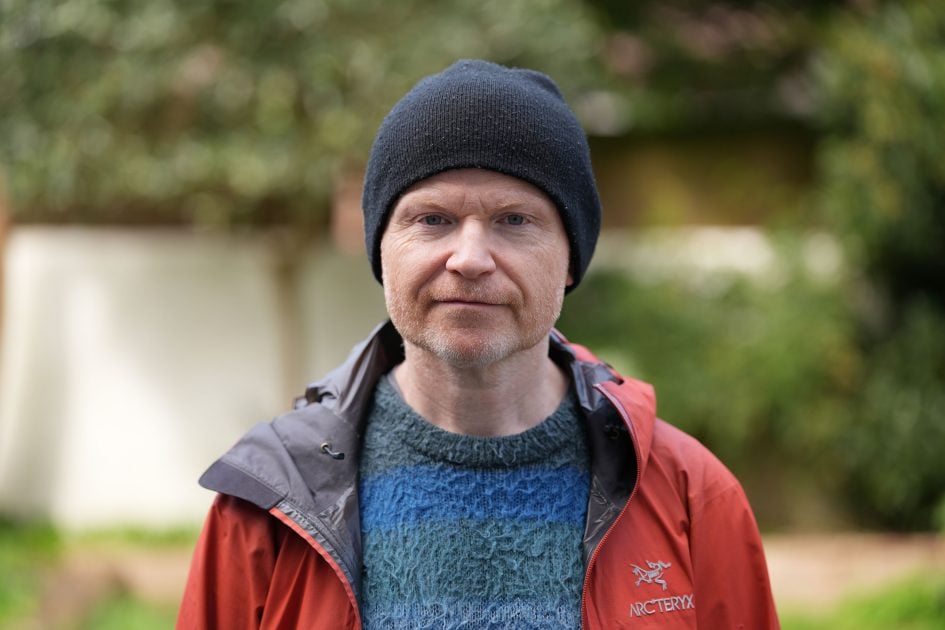
Above: Or how about 85mm, where you can already see the change in perspective, and the reduced area in the background.
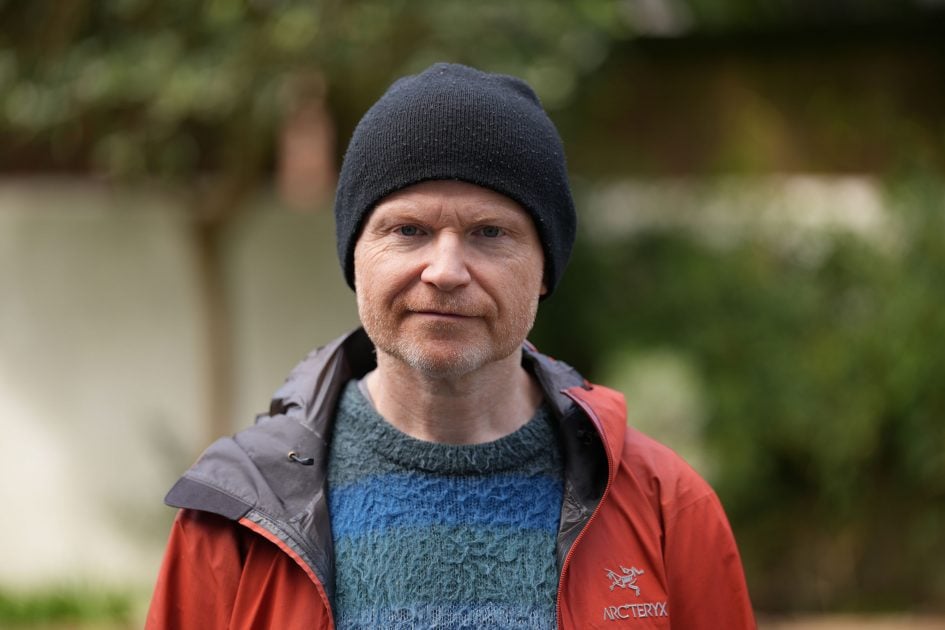
Above: Now at 135mm, where the background is much tighter, allowing you to really isolate the subject.
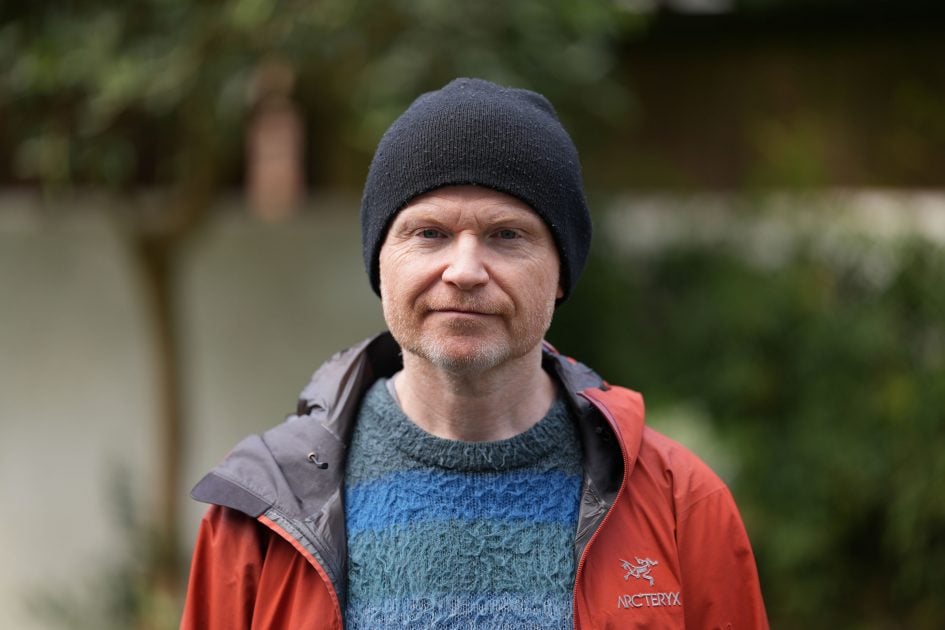
Above: and finally at 150 which lets you get a little tighter still. I stood further from the camera at each length to try and maintain the subject size.
Are they sharp though? Well, what do you think? Here’s the view at 50mm f2 and taking a closer look at my eyes shows the high degree of detail we’ve come to expect from recent Sony lenses. Now at 85mm f2, and again zooming-into my eyes shows very crisp details, while the background blur is nice and soft. Likewise at 135mm f2 here, with sharp details in focused areas and even greater obliteration of the background. Like all recent G Master lenses, it manages to balance crisp details with smooth background blur. And finally at 150mm f2 where Sony reckons you’ll be enjoying similar background blur to the 135 1.8 prime wide-open. Note in all of these examples I’ve had to move progressively further from the camera, in turn bringing me closer to the background. So if your background is more distant, you’ll enjoy even greater blurring.

Above: For a more formal test of background blur it’s time for my bokeh ball test, photographed from the closest focusing distance of the lens. Let’s start at 50mm f2 from a distance of 40cm, where the fairy lights are transformed into huge bokeh blobs, mostly well-behaved and minimising outlines and textures within.
Unsurprisingly for a large aperture lens of this design the blobs are taking on the elongated cats-eye shape, but closing the aperture to f2.8 begins to render them more into circles, and at f4, they’re much more uniform looking. Also note how the diaphragm system is keeping out of the way even closed by two stops, with little to no evidence of a geometric shape. Close it to f5.6 and smaller though and the shape becomes more apparent, but it’s impressive how it keeps mostly out of the way between f2 and f4.

Above: and now for the lens at 150mm f2, from a distance of 74cm, here delivering nice large blobs again with minimal outlining or textures. This time though I’d say more of them are looking more circular than at 50mm f2. As before, closing the aperture to f2.8 makes them more uniformly circular, and even more so at f4, and again it’s impressive how well the diaphragm system keeps out of the way. Again at f5.6 onwards though, the geometric shape becomes more apparent, but the rendering still looks nice.
As for macro reproduction, I captured 167mm across the frame from the closest focusing distance at either end of the range, so approximately 0.2x magnification.
And before wrapping-up, here’s a selection of bursts I took with the lens on a sunny day at Brighton seafront. The Brighton marathon was just wrapping-up, allowing me to try it for close-ish range sports, and while 150 isn’t quite long enough for the seagulls, Steven and his friends spotted lots of tourist snacks to try their luck with.
Check prices on the Sony FE 50-150mm f2 GM at B&H, Adorama, WEX UK or Calumet.de. Alternatively get yourself a copy of my In Camera book, an official Cameralabs T-shirt or mug, or treat me to a coffee! Thanks!

 Sony’s FE 50-150mm f2 G Master is a unique lens that will delight portrait, event and close-range sports photographers. Traditionally they’d be using a 70-200 f2.8, but I’d argue the 50-150 range is actually more practical in many of these situations, while the brighter f2 aperture delivers greater background blur and the chance to use faster shutters or lower ISOs under the same conditions. We often kid ourselves a 70-200 2.8 can replace primes, but the reality often fails to match the kind of background blur on a fixed focal length lens. But the 50-150 f2 comes much closer, especially if you zoom a little longer. And by exploiting Sony’s latest optics, it delivers the crisp details and soft blur we’ve come to enjoy from the best in the G Master series. For distant subjects, the 50-150 delivers pin-sharp images throughout the range and pretty much across the frame at the maximum aperture. At portrait distances the eyes are crisp, while the background rendering is nice and smooth with no distracting artefacts. And on top of that you’re getting a decent feature-set including a de-clickable aperture ring, removable tripod foot, and compatibility with Sony’s fastest bursts. No lens is perfect of course, with the 50-150 sadly not compatible with teleconverters, and while it is lighter than Sony’s first 70-200 2.8 zoom, that still makes it quite a hefty lens to carry around, especially compared to their latest and surprisingly light 70-200 2.8 Mark II. It’s also comfortably more expensive. But again think of the larger aperture and the primes it could replace in your bag.
Sony’s FE 50-150mm f2 G Master is a unique lens that will delight portrait, event and close-range sports photographers. Traditionally they’d be using a 70-200 f2.8, but I’d argue the 50-150 range is actually more practical in many of these situations, while the brighter f2 aperture delivers greater background blur and the chance to use faster shutters or lower ISOs under the same conditions. We often kid ourselves a 70-200 2.8 can replace primes, but the reality often fails to match the kind of background blur on a fixed focal length lens. But the 50-150 f2 comes much closer, especially if you zoom a little longer. And by exploiting Sony’s latest optics, it delivers the crisp details and soft blur we’ve come to enjoy from the best in the G Master series. For distant subjects, the 50-150 delivers pin-sharp images throughout the range and pretty much across the frame at the maximum aperture. At portrait distances the eyes are crisp, while the background rendering is nice and smooth with no distracting artefacts. And on top of that you’re getting a decent feature-set including a de-clickable aperture ring, removable tripod foot, and compatibility with Sony’s fastest bursts. No lens is perfect of course, with the 50-150 sadly not compatible with teleconverters, and while it is lighter than Sony’s first 70-200 2.8 zoom, that still makes it quite a hefty lens to carry around, especially compared to their latest and surprisingly light 70-200 2.8 Mark II. It’s also comfortably more expensive. But again think of the larger aperture and the primes it could replace in your bag.
